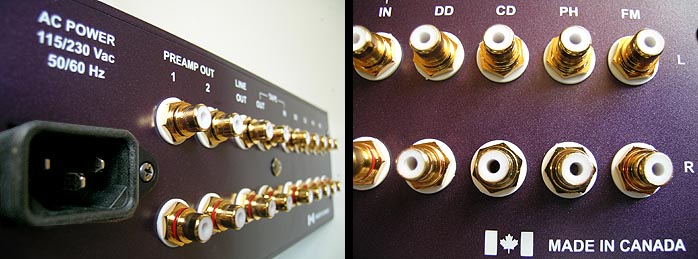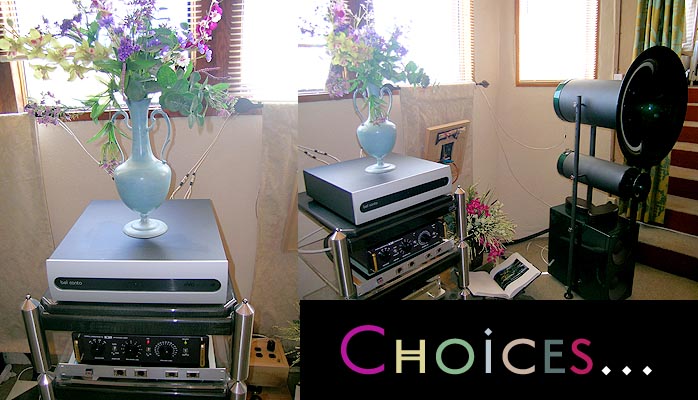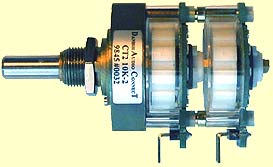 |
||||||||||||||||
| Audio's law of relativity If the match up of Coral/Model 88s erred 'in the middle' where bloom lives, the Pre6/eVo4 all-transistor combo erred on the drier end, offering stunning resolution set under cooler, paler and less dimensional light - this despite being preceded by the tubed Zanden Audio Model 5000 valve DAC whose tubes, in truth, don't telegraph at all. Strapping the Tripath amp to the Coral instead redressed this shift to add body and expansiveness without overstepping the boundaries of good balance. Naturally, all of this is a very personal matter. Still, this exercise proved how the Coral's specific set of attributes could be exploited to best advantage as presumably intended by its designer or -- deliberately or because of lacking sufficient ancillary options -- be made to appear like a liability. Many 'bad' reviews are truly a function of just this - a lack of either reviewer effort to find copasetic mates; or sheer lack of play options to facilitate such mating trials. Before I dig a bit deeper into this set of attributes, another brief comparison first - that between sand/glass vs glass/sand. To these ears, the PRe6/Model 88 duo was more dynamic, emotionally compelling and exciting, the Coral/eVo4 team more aloof and cooler. I believe my preference was partially due to Eduardo de Lima's TimbreLock which, on ultra-revealing speakers like the Avantgardes, does allow you to 'ratchet the lens' until the emotive power truly snaps into focus. The other partial contributor might be the Coral's relative politeness in the dynamic domain. If there's one area in which the Jade as the next preamp model up in the Wyetech stable will improve upon the Coral, it'll be with dynamic elan. At least that's my prediction. In this particular juxtaposition, it's worth noting that $8,400 separated both systems. In fact, this change would buy you another set of Coral/eVo4 and leave $3,300 in your pocket. |
||||||||||||||||
 |
||||||||||||||||
The following observations were made with the Coral tethered to the Bel Canto eVo4 amplifier which showcased the preamp's virtues to greatest effect. All cabling was Crystal Cable Reference except for two analogue Stealth Indra pairs and a Stealth Varidg digital. |
||||||||||||||||
 |
||||||||||||||||
A further choice was made to run the eVo4 in balanced/bridged mode. It nets readily audible dividends quite outside the 360wpc rating which, in itself, would be crazy overkill on my hornspeakers. This constellations of components could be pushed into both high playback levels and unsavory software material without baring fangs. Interestingly enough, I found the power amp to be dominant in the final tally of audiophile checklist weighting. The Coral's contributions were in the tonal domain of added richness but you'd never mistake the final result for triode-based - SETs don't tend to create this kind of leading-edge blister. There was more depth layering compared to the PRe6 and just the right infusion of moisture to offset the slight dryness I hear when using the Bel Canto duo in tandem. I wasn't at any loss for fine detail and could clearly discern different recording environs though what is real and what is mixing trickery (recombining isolated sound booth tracks into a virtually generated acoustics) can be a hard thing to tease out regardless of components. |
||||||||||||||||
 |
||||||||||||||||
One recording with completely unambiguous hall ambience is Cantors | A Faith in Song [TV Matters B.V. 9040] recorded in Amsterdam's historic 17th century Portuguese synagogue. The live audience applause, the distinct physical positioning of the three Jewish tenors relative to the orchestral forces and chorus are clear telltale signs even without the liner notes. Vis-à-vis the Bel Canto, the affordable Wyetech preamp created more audible space, particularly around the tenor voices which, freed from classical restraints of control, here often veer into grande gestures of colossal walking-on-eggs vibratos, articulated lyrical emphasis and go-for-broke peaks, a lively brogue of cabaret, Yiddish folk song and symphonic tenorship. |
||||||||||||||||
 |
||||||||||||||||
| What the Coral brought to this sanctified party was more 'presence lock', reviewer speak for not harder, more chiseled outlines but rather, a more expansive sense of spatial parameters around the voice which creates palpable context within its surroundings. Chiseling would be cutouts. Outline an image first, then select 'inverse' to grab the remainder of the entire soundstage, lighten and slightly desaturate all this background to make the outlined image stand out more. It's a bit like colored inserts on a black-and-white canvas. This creates unnatural isolation and fake contrast. Instead, the Coral took the negative space of air between performers and added saturation to that. The result was more apparent realism, a greater visibility not just of the noise makers but the actual silent space they performed in. That's the 3D holography which audio hacks wax about and components like the Coral generate. It's an area wherein tubes still reign supreme. As such, it's a distinct asset which owners of solid-state amps tend not to enjoy to the same extent. A side effect is an illusion of a bigger and slightly bolder sound. Nothing moves outwards but things still sound bigger. That's audio hackinese for presence. I noted a very small amount of dynamic compression during the most unhinged peaks of our three rabbis but it completely avoided the brittle hardening so typical of lesser solid-state. It telegraphed simply as a subliminal sense of holding back, of not going the final distance. With the Coral's completely counter-intuitive yet super-exploded bandwidth to nearly one MHz, high-frequency roll off isn't even part of its vocabulary. It's like those native American languages which lacked clear cut words for 'me' and 'mine'. If that concept of 'I' isn't properly defined, it creates distinct effects. If your speakers are up to the challenge, the Coral will give you treble completely uncut. It's on the other end of the spectrum where more endowed power supplies would likely mine with an even stronger grip. The Coral's pitch definition in the basement isn't complete statement material but then, neither is its asking price. |
||||||||||||||||
| Fill 'er up! Does it seem as though I've been unduly tough on the Coral? I'd say. That's because it invited being evaluated on a very high plateau, surrounded -- by default I might add -- by components far in excess of its own price. It's an unfortunate side effect of reviewer systems moving upscale as time goes by. To retain context and remain representative of all the market has to offer, we continue to review components which are really designed to perform with others in their own class. What does this mean where the Wyetech Labs Coral is concerned? Simply this: There is no $2,000 preamp on the market I'm familiar with that comes even close to matching its mindboggling bandwidth. In fact, you could spend $10,000 and still be found wanting. This suggests a completely tricked-out trickle-down circuit derived from the Coral's dearer siblings. Indeed, the Coral is the last, the Opal the first Wyetech model to have hit the market. Roger Hebert went for the all-out design first to set a standard, then worked on consecutively more and more affordable models to bring as much as possible of the flagship performance to lower price points. |
||||||||||||||||
 |
||||||||||||||||
| While power supplies must have shrunk and certain price-prohibitive parts replaced, it's rather shocking that the base circuit should have survived the down-market transition. For once, $2,000 buys you a tube preamp without any bandwidth limitations. That's true for both ends of the spectrum. The only caveat in that regard is that the lowest bass doesn't exhibit the kind of monster impact and heft true SOTA preamps bestow. As the photos of the internals show, build quality is without compromise while the feature set leaves nothing to be desired. What we have here then is a $2,000-statement preamp. It's a statement about how much its designer could scale down from his flagship effort while still proudly affixing his name to the outcome. Used with components in its own financial 'hood, I predict you'll be hard-pressed to do better. In fact, owners of even relatively expensive solid-state amplifiers who wish to inject a goodly dose of tube magic into their rigs might be well advised to put the Coral on their must-try list. Next up from Wyetech? The brand-new 18-watt paralleled 300B Sapphire monoblocks for $6,800/pr.... |
||||||||||||||||
| Wyetech Labs responds: Yes, there is no remote. Up to this point we have decided against this feature as it would compromise the sound quality in certain critical areas that could not be solved without substantially increasing the price. Remote control forces one to make certain types of decisions with regard to the type of balance and attenuator devices that can be used. These controls are in our opinion critical to maximizing the sound of the unit. The best circuit in the world can be destroyed by a $20 motor-driven Alps volume pot. Upon investigation you will find that all our line stages contain discrete stepper switches and resistors for all balance, gain and volume settings. Our Coral line stage uses an Elma/Dact attenuator that retails for $180 in the USA hobbyist market. You will most likely find a $10 to $20 Alps-type carbon or plastic potentiometer in other line stages at this price point. The balance control is also critical to the performance when engaged in other than its zero position, which in a good design bypasses all associated resistors. We have however made every effort to insure that user friendliness and adaptability with other products are carefully thought out and implemented in our design. For this reason we always use a single stereo volume control as opposed to dual mono attenuators. |
||||||||||||||||
| The Coral together with our other line stages is indeed exceptionally quiet considering it is a tubed unit. DC on the filaments and extreme filtering of the high voltage supply is one of the methods that makes this possible. Indeed our top model being the Opal is the most neutral with the most exacting resolution that is hard to quantify. The Coral was made possible by us obtaining a large purchase of military NOS tubes which we have in stock- over 18,000 of various types to insure a lifetime supply for each product. We would like to point out that our design strategy was not to create tube sounding equipment. We chose to use tubes, specifically pure |
||||||||||||||||
 |
||||||||||||||||
| triodes for one reason - because these are the most linear devices yet created. Early on in our research, we determined that feedback in most situations was not an option to correct non-linearities. The only successful feedback that we have confidence in is the local cathode follower type which reduces the gain to below unity and is almost instantaneous in speed. These are where the designer's paradigm enters into the sonic signature that is usually perceived to be a distinct sonic characteristic. The distinction "tubey sound" arises from the type of tube and the circuit it is placed in. Pentodes such as the famous 6550/KT88 do have this signature due to their very high plate impedances and the push-pull nature of the circuits they are usually found in. Triodes on the contrary have much lower plate resistance, are far more linear and any distortion produced is usually of the even order 2nd harmonic which is harmonious to the music. All Wyetech Labs products use triodes exclusively. Our pursuit is for truth to the original signal, which on well recorded mediums can be well appreciated by music loving fans. Though the Coral is not in league with the exquisiteness of the Opal, it shares many similar attributes, albeit with lesser impact, but still retains the linearity and bandwidth necessary to be in the high-end league. |
||||||||||||||||
Roger J. Hebert Principal Design Engineer |
 |
|||||||||||||||
 |
||||||||||||||||
| Manufacturer's website | ||||||||||||||||
 |
||||||||||||||||